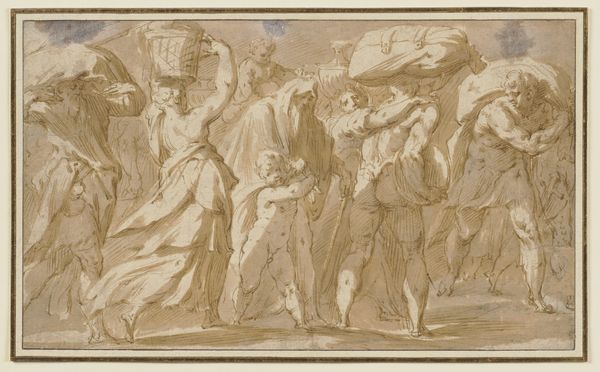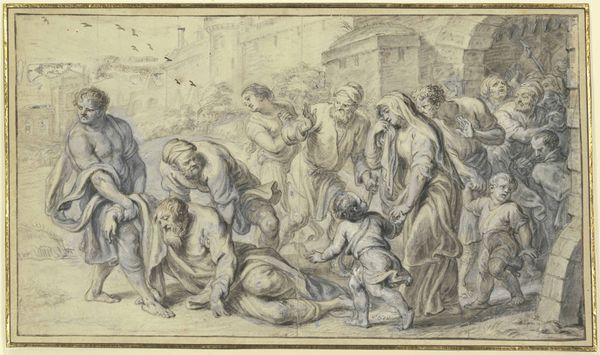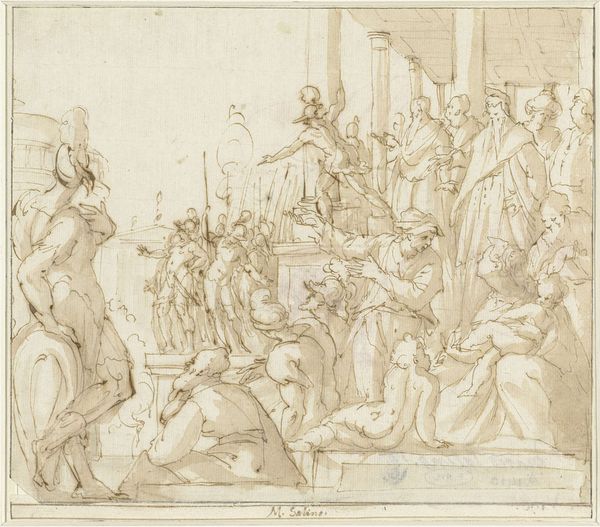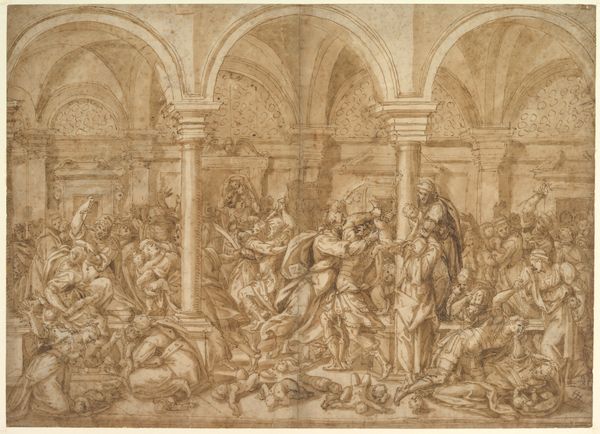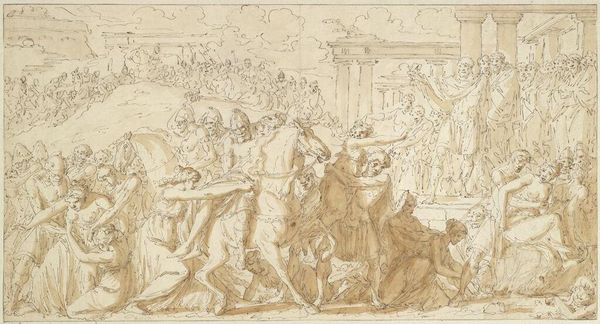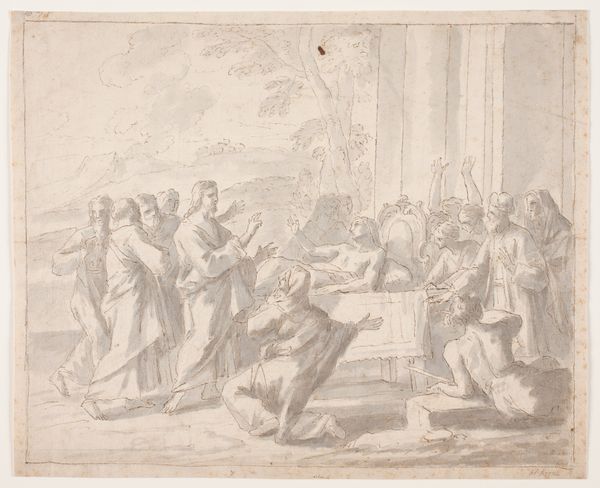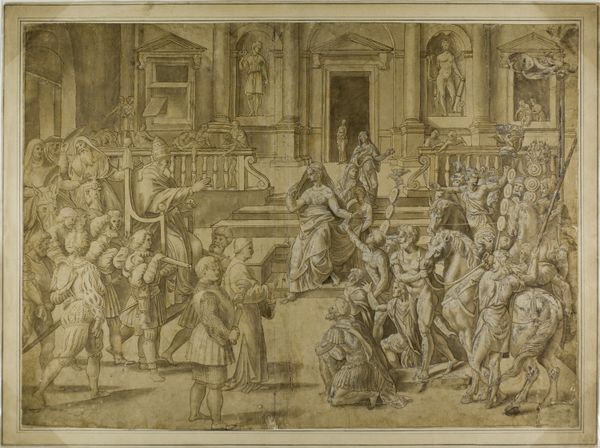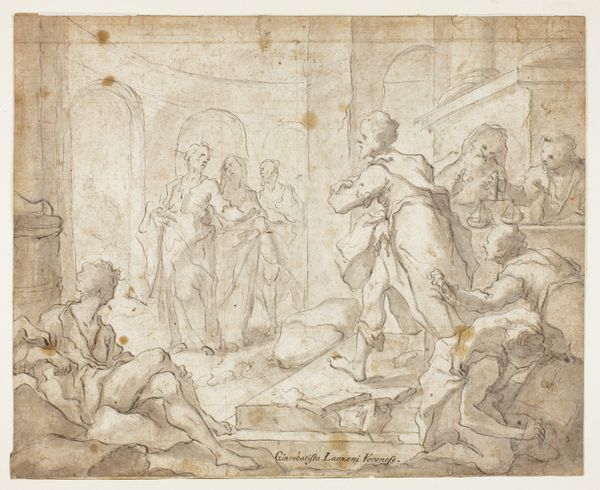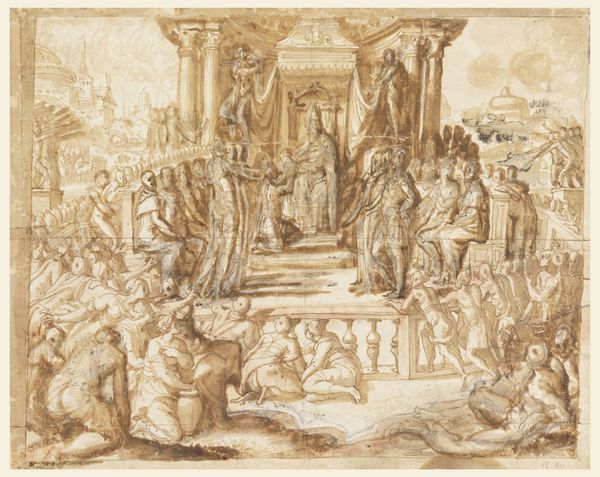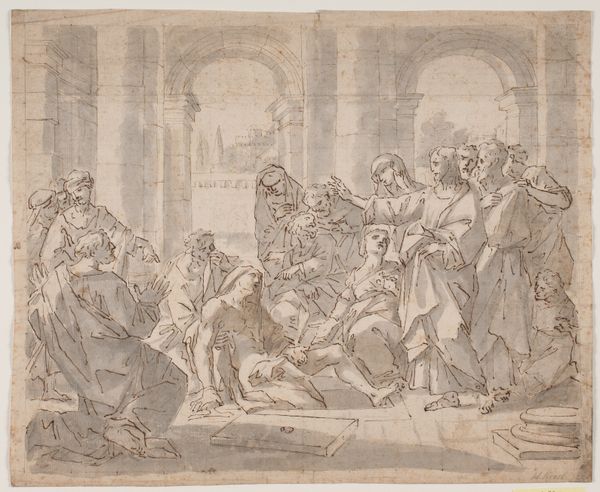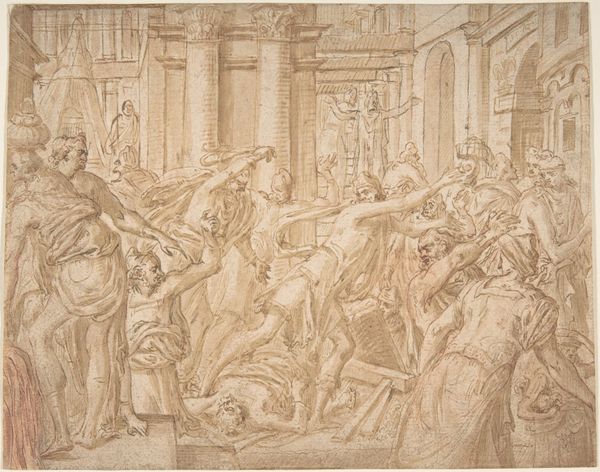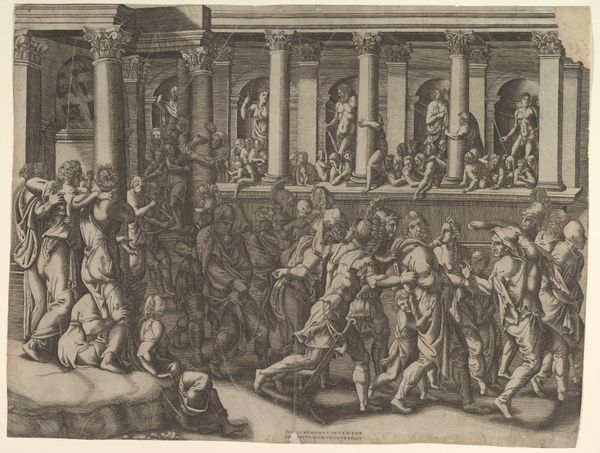
drawing, print, paper, chalk, graphite, charcoal
#
drawing
#
narrative-art
# print
#
landscape
#
charcoal drawing
#
figuration
#
paper
#
romanticism
#
chalk
#
graphite
#
charcoal
#
history-painting
#
academic-art
Dimensions: 557 × 660 mm
Copyright: Public Domain
Curator: Well, my initial gut feeling? It's… monumental. Like a dusty dream. There's this swirling chaos but it's all rendered in such controlled lines. Editor: Exactly! What we're seeing here is Julius Schnorr von Carolsfeld’s “Defeat of Wittekind near Bürberg,” dating from 1835. This drawing, executed in graphite, charcoal, chalk, and even a bit of pen, depicts a pivotal moment in early medieval history. Curator: The sheer density is incredible. Every inch is packed with figures locked in combat. What strikes me is the way the architectural background—that Romanesque dome— looms almost like a ghostly premonition over the battlefield. Editor: Yes, and situating this within its historical context, consider the artist’s intention: Carolsfeld sought to visually represent the Christianization of the Saxons under Charlemagne. Wittekind, a leader of the Saxons, resisted this forced conversion, leading to decades of war. Curator: And it’s so… Romantic. It’s got that whole 'history-as-grand-narrative' vibe. It feels both dramatic and deliberately… didactic. Editor: Precisely! And think about the implications of portraying this particular historical moment. It served as visual propaganda, reinforcing notions of national and religious identity at a time of burgeoning German nationalism. Notice, too, the racial undertones often present in depictions of victorious Christian armies triumphing over “barbaric” opponents. Curator: Absolutely. The way Wittekind and his warriors are drawn with those exaggerated, almost agonized poses. It almost feels… performative. There's a staged quality, don’t you think? It’s less about the visceral reality of combat and more about representing an idea of it. Editor: Right! And that ties directly to the art historical trends of the time, doesn't it? Academic art prized idealized forms and carefully constructed compositions, often at the expense of true emotional depth or social critique. And this wasn't just history painting, it was nation-building through image-making. Curator: It’s both a battlefield and a stage then, I suppose. Still, despite all the complex politics churning beneath its surface, there’s an undeniable visceral power to it. A power I think comes from the sheer force of artistry and all that skillful tonal control, even if it’s harnessed toward something a little bit questionable! Editor: It certainly provides a potent example of how art, history, and ideology can be inextricably entwined, sparking endless discussion on our present understanding of identity and power!
Comments
No comments
Be the first to comment and join the conversation on the ultimate creative platform.

